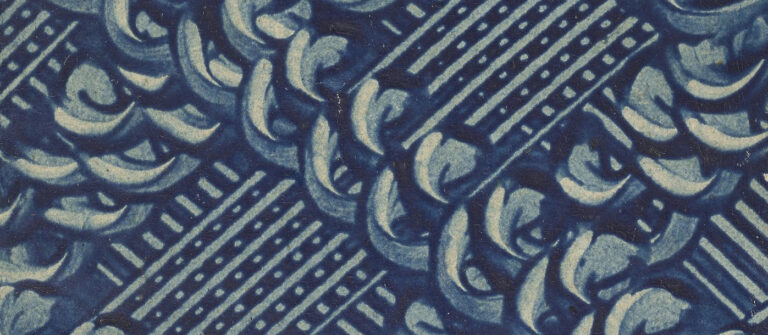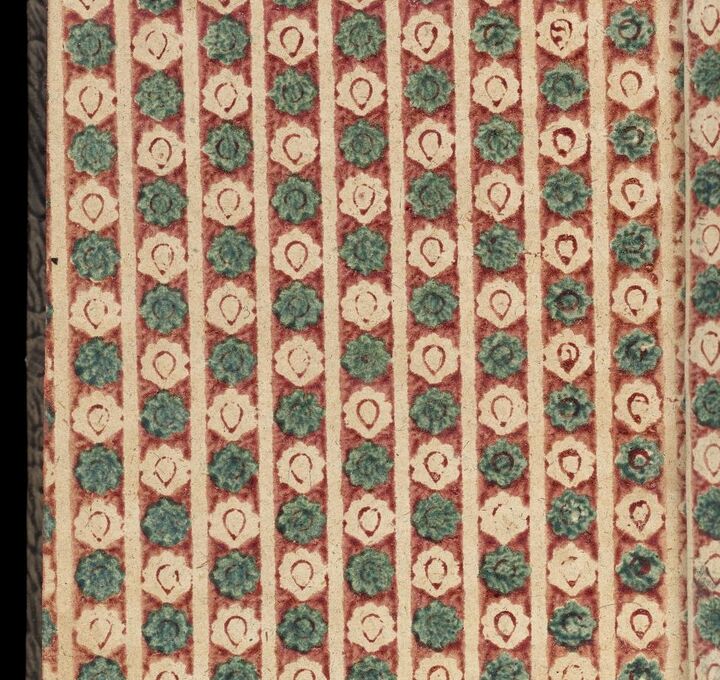Paper Types

Scroll to discover a selection of different paper types in the collection and how they were made.

Bronze Varnish
Manufactured in Augsburg in Germany between about 1690 and 1730, this is made by mixing powdered metal (usually copper-based) with a varnish, and printing it onto coloured paper with a woodblock. It produces images which are very flat and smooth and owe some of their shine to the glazed effect given by the varnish. It fell out of use in the 1730s, probably because other methods of printing metallics gave brighter results.
Download a printable pdf of this decorated paper here.
|

Brocade
“Brocade” is used to describe a wide range of papers. The thing they have in common is shiny metallic leaf, embossed in a pattern into the paper. Beyond this, the paper could have a plain background colour, or multi-coloured patterned background, or hand-coloured highlights added after printing.
This example is one of the most popular styles, called “Drap d’Or” (Cloth of Gold). This one has a dense pattern of flowers with a gilt-embossed background. Splodges of colour were applied to the flower heads by hand.
|

Block Printed
Woodblocks were the most versatile technology available in the eighteenth century for mass-producing images. In the decorated paper trade they were used with conventional printing ink, or with coloured paste instead of the ink, and they could even be used to print ‘blind’ into coloured paste to produce a negative image.
This is a very straightforward block-printed paper, using paste, and two blocks, one for each colour. It is typical of the many relatively unsophisticated repeat-pattern papers which were produced all over Europe.
Download a printable pdf of this decorated paper here.
|

Paste
The easiest technique for decorating paper was with paste – the same mixture of starch and water used by bookbinders for sticking paper - diluted and with coloured pigment added. At its simplest, a layer of paste spread on two sheets of paper, squidged together then pulled apart, produces an interesting organic effect, which was widely used on ordinary book covers. More elaborate effects came from making patterns in the paste with a finger, stick or comb-shaped tool, or printing with it, or into it.
|
